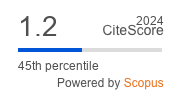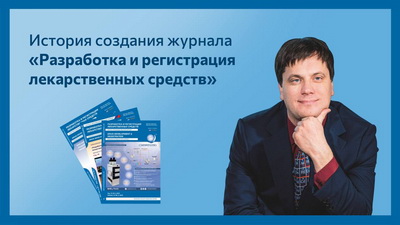МЕТОДЫ МОДЕЛИРОВАНИЯ ОСТРЫХ НАРУШЕНИЙ МОЗГОВОГО КРОВООБРАЩЕНИЯ, ПРИМЕНЯЕМЫЕ ПРИ ПРОВЕДЕНИИ ДОКЛИНИЧЕСКИХ ИССЛЕДОВАНИЙ ЦЕРЕБРОПРОТЕКТОРОВ
Аннотация
Об авторах
И. Н. ТюренковРоссия
Д. В. Куркин
Россия
А. А. Литвинов
Россия
Е. А. Логвинова
Россия
Е. И. Морковин
Россия
Д. А. Бакулин
Россия
Е. В. Волотова
Россия
Список литературы
1. Е.И. Гусев, А.С. Чуканова. Современные патогенетические аспекты формирования хронической ишемии мозга // Журнал неврологии и психиатрии им. C.C. Корсакова. 2015. Т. 115. № 3-1. С. 4-8.
2. S.T. Carmichael. Rodent models of focal stroke: size, mechanism, and purpose // NeuroRx. 2005. V. 2. № 3. P. 396-409.
3. U. Dirnagl, M.R. Macleod. Stroke research at a road block: the streets from adversity should be paved with meta-analysis and good laboratory practice // Br. J. Pharmacol. 2009. V. 157. № 7. P. 1154-1156.
4. S. Braeuninger, C. Kleinschnitz, B. Nieswandt, G. Stoll. Focal cerebral ischemia methods // Mol. Biol. 2012. V. 788. P. 29-42
5. E.G. Sozmen, J.D. Hinman, S.T. Carmichael. Models that matter: white matter stroke models // Neurotherapeutics. 2012. V. 9. № 2. P. 349-358.
6. D.W. Howells, M.J. Porritt, S.S. Rewell, V. O’Collins, E.S. Sena, H.B. van der Worp, R.J. Traystman, M.R. Macleod. Different strokes for different folks: the rich diversity of animal models of focal cerebral ischemia // J. Cereb. Blood Flow Metab. 2010. V. 30. № 8. P. 1412-1431.
7. N. Beckmann. High resolution magnetic resonance angiography non-invasively reveals mouse strain differences in the cerebrovascular anatomy in vivo // Magn Reson Med. 2000. V. 44. № 2. P. 252-258.
8. B.W. McColl, H.V. Carswell, J. McCulloch, K. Horsburgh. Extension of cerebral hypoperfusion and ischaemic pathology beyond MCA territory after intraluminal filament occlusion in C57Bl/6J mice // Brain Res. 2004. V. 997. № 1. P. 15-23.
9. F.C. Barone, D.J. Knudsen, A.H. Nelson, G.Z. Feuerstein, R.N. Willette. Mouse strain differences in susceptibility to cerebral ischemia are related to cerebral vascular anatomy // J. Cereb. Blood Flow Metab. 1993. V. 13. № 4. P. 683-692.
10. Y. Yamori. Neural and non-neural mechanisms in spontaneous hypertension // Clin. Sci. Mol. Med. Suppl. 1976. V. 3. P. 431-434.
11. E.L. Bailey, C. Smith, C.L. Sudlow, J.M. Wardlaw. Is the spontaneously hypertensive stroke prone rat a pertinent model of sub cortical ischemic stroke? A systematic review // Int. J. Stroke. 2011. V. 6. № 5. P. 434-444.
12. Manual of stroke models in rats / Ed. by Yanlin Wang Fischer. - Taylor & Francis Group: CRC Press, 2008. 340 p.
13. S.J. Murphy, L.D. McCullough, J.M. Smith. Stroke in the female: Role of biological sex and estrogen // ILAR J. 2004. V. 45. № 2. P. 147-153.
14. S.M. Graham, L.D. McCullough, S.J. Murphy. Animal models of ischemic stroke: balancing experimental aims and animal care // Comp. Med. 2004. V. 54. № 5. P. 486-497.
15. K.A. Radermacher, K. Wingler, F. Langhauser, S. Altenhöfer, P. Kleikers, J.J. Hermans, M. Hrabě de Angelis, C. Kleinschnitz, H.H. Schmidt. Neuroprotection after stroke by targeting NOX4 as a source of oxidative stress // Antioxid. Redox. Signal. 2013. V. 18. № 12. P. 1418-1427.
16. K.A. Hossmann, F.J. Schuier. Experimental brain infarcts in cats. Pathophysiological observations // Stroke. 1989. V. 11. № 6. P. 583-592.
17. B. Bose, J.L. Osterholm, R. Berry. A reproducible experimental model of focal cerebral ischemia in the cat // Brain Res. 1984. V. 311. № 2. P. 385-391.
18. W. Paschen, M. Sato, G. Pawlik, C. Umbach, W.D. Heiss. Neurologic deficit, blood flow and biochemical sequelae of reversible focal cerebral ischemia in cats // J. Neurol Sci. 1985. V. 68. № 2-3. P. 119-134.
19. T.H. Jones, R.B. Morawetz, R.M. Crowell, F.W. Marcoux, S.J. FitzGibbon, U. DeGirolami, R.G. Ojemann. Thresholds of focal cerebral ischemia in awake monkeys // J. Neurosurg. 1981. V. 54. № 6. P. 773-782.
20. S. Hayashi, D.G. Nehls, C.F. Kieck, J. Vielma, U. DeGirolami, R.M. Crowell. Beneficial effects of induced hypertension on experimental stroke in awake monkeys // J. Neurosurg. 1984. V. 60. № 1. P. 151-157.
21. M.J. Robinson, I.M. Macrae, M. Todd, J.L. Reid, J. McCulloch. Reduction of local cerebral blood flow to pathological levels by endothelin-1 applied to the middle cerebral artery in the rat // Neurosci. Lett. 1990. V. 118. № 2. P. 269-272.
22. A. Tamura, D.I. Graham, J. McCutloсh, G.M. Teasdale. Focal cerebral ischaemia in the rat: description of the technique and early neuropathological consequences following middle cerebral artery occlusion // J. Cereb. Blood Flow Metab. 1981. V. 1. P. 53-60.
23. P. Coyle. Diameter and length changes in cerebral collaterals after middle cerebral artery occlusion in the young rat // Anat. Rec. 1984. V. 210. № 2. P. 357-364.
24. P. Coyle. Outcomes to middle cerebral artery occlusion in hypertensive and normotensive rats // Hypertension. 1984. V. 6. № 2. P. 69-74.
25. J.B. Bederson, L.H. Pitts, M. Tsuji, M.C. Nishimura, R.L. Davis, H. Bartkowski. Rat middle cerebral artery occlusion: evaluation of the model and development of a neurologic examination // Stroke. 1986. V. 17. № 3. P. 472-476.
26. S.T. Chen, C.Y. Hsu, E.L. Hogan, H. Maricq, J.D. Balentine. A model of focal ischemic stroke in the rat: reproducible extensive cortical infarction // Stroke. 1986. V. 17. № 4. P. 738-743.
27. A.B. Топчян, P.C. Мирзоян, М.Г. Баласанян. Локальная ишемия мозга крыс, вызванная перевязкой средней мозговой артерии // Экспериментальная и клиническая фармакология. 1996. Т. 59. № 5. С. 62-64.
28. И.Н. Тюренков, Е.В. Волотова, Д.В. Куркин, Д.А. Бакулин, И.О. Логвинов, Т.А. Антипова. Нейропротекторное действие нейроглутама в условиях активации свободно-радикально- го окисления // Экспериментальная и клиническая фармакология. 2014. Т. 77. № 8. С. 16-19.
29. А.А. Шмонин. Перевязка средней мозговой артерии крысы: сравнение модификаций моделей фокальной ишемии мозга у крысы // Регионарное кровообращение и микроциркуляция. 2011. Т. 10. № 3. C. 68-76.
30. D. Chalothorn, J.E. Faber. Formation and vaturation of the native cerebral collateral circulation // J. Mol. Cell Cardiol. 2010. V. 49. № 2. P. 251-259.
31. J. Sharkey, I.M. Ritchie, P.A. Kelly. Perivascular microapplication of endothelin-1: a new model of focal cerebral ischaemia in the rat // J. Cereb. Blood Flow Metab. 1993. V. 13. № 5. P. 865-871.
32. P.M. Hughes, D.C. Anthony, M. Ruddin. Focal lesions in the rat central nervous system induced by endothelin-1 // J. Neuropathol. Exp. Neurol. 2003. V. 62. № 12. P. 1276-1286.
33. K. Fuxe, B. Bjelke, B. Andbjer, H. Grahn, R. Rimondini, L.F. Agnati. Endothelin-1 induced lesions of the frontoparietal cortex of the rat. A possible model of focal cortical ischemia // Neuroreport. 1997. V. 8. № 11. P. 2623-2629.
34. S.B. Frost, S. Barbay, M.L. Mumert, A.M. Stowe, R.J. Nudo. An animal model of capsular infarct: endothelin-1 injections in the rat // Behav. Brain Res. 2006. V. 169. № 2. P. 206-211.
35. N.M. Ward, J. Sharkey, H.M. Marston, V.J. Brown. Simple and choice reactiontime performance following occlusion of the anterior cerebral arteries in the rat // Exp. Brain Res. 1998. V. 123. № 3. P. 269-281.
36. J. Koizumi, Y. Yoshida, T. Nakazawa, G. Ooneda. Experimental studies of ischemic brain edema: a new experimental model of cerebral embolism in rats in which recirculation can be introduced in the ischemic area // Jpn. J. Stroke. 1986. V. 8. P. 1-8.
37. E.Z. Longa, P.R. Weinstein, S. Carlson, R. Cummins. Reversible middle cerebral artery occlusion without craniectomy in rats // Stroke. 1989. V. 20. P. 84-91.
38. L. Belayev, O.F. Alonso, R. Busto, W. Zhao, M.D. Ginsberg. Middle cerebral artery occlusion in the rat by intraluminal suture neurological and pathological evaluation of an improved model // Stroke. 1996. V. 27. № 9. P. 1616-1622.
39. И.Н. Тюренков, Д.В. Куркин, Д.А. Бакулин, Е.В. Волотова. Изучение нейропротекторного действия нового производного глутаминовой кислоты - нейроглутама при фокальной ишемии мозга у крыс // Экспериментальная и клиническая фармакология. 2014. Т. 77. № 9. С. 8-12.
40. А.А. Спасов, В.Ю. Федорчук, Н.А. Гурова, Н.И. Чепляева, Е.В. Резников. Методологический подход для изучения нейропротекторной активности в эксперименте // Ведомости Научного центра экспертизы средств медицин- ского применения. 2014. № 4. С. 39-45.
41. N. Futrell N. C. Millikan, B.D. Watson, W.D. Dietrich, M.D. Ginsberg. Embolic stroke from a carotid arterial source in the rat: pathology and clinical implications // Neurology. 1989. V. 39. № 8. P. 1050-1056.
42. P. Wester, B.D. Watson, R. Prado, W.D. Dietrich. A photothrombotic «ring» model of rat stroke-in-evolution displaying putative penumbral inversion // Stroke. 1995. V. 26. P. 444-456.
43. H. Yanamoto, I. Nagata, Y. Niitsu, J.H. Xue, Z. Zhang, H. Kikuchi. Evaluation of MCAO stroke models in normotensive rats: standardized neocortical infarction by the 3VO technique // Exp. Neurol. 2003. V. 182. № 2. P. 261-274.
44. A.M. Buchan, D. Xue, A. Slivka. A new model of temporary focal neocortical ischemia in the rat // Stroke. 1992. V. 23. № 2. P. 273-279.
45. K. Hiramatsu, N.F. Kassell, Y. Goto, S. Soleau, K.S. Lee. A reproducible model of reversible, focal, neocortical ischemia in Sprague-Dawley rat // Acta Neurochir. (Wien). 1993. V. 120. № 1-2. P. 66-71.
46. B.D. Watson. Concepts and techniques of experimental stroke induced by cerebrovascular photothrombosis. Central Nervous System Trauma. - Florida: CRC Press, 1995. 438 p.
47. J.L. Tremoleda, A. Kerton, W. Gsell. Anaesthesia and physiological monitoring during in vivo imaging of laboratory rodents: considerations on experimental outcomes and animal welfare // EJNMMI Res. 2012. V. 2. № 1. P. 44.
48. J.A. Davis. Mouse and rat anesthesia and analgesia // Curr. Protoc. Neurosci. 2008. Appendix 4:Appendix 4B.
49. F. Fluri, M.K. Schuhmann, C. Kleinschnitz. Animal models of ischemic stroke and their application in clinical research // Drug Des. Devel. Ther. 2015. V. 2. № 9. P. 3445-3354.
Рецензия
Для цитирования:
Тюренков И.Н., Куркин Д.В., Литвинов А.А., Логвинова Е.А., Морковин Е.И., Бакулин Д.А., Волотова Е.В. МЕТОДЫ МОДЕЛИРОВАНИЯ ОСТРЫХ НАРУШЕНИЙ МОЗГОВОГО КРОВООБРАЩЕНИЯ, ПРИМЕНЯЕМЫЕ ПРИ ПРОВЕДЕНИИ ДОКЛИНИЧЕСКИХ ИССЛЕДОВАНИЙ ЦЕРЕБРОПРОТЕКТОРОВ. Разработка и регистрация лекарственных средств. 2018;(1):186-197.
For citation:
Tyurenkov I.N., Kurkin D.V., Litvinov A.A., Logvinova E.A., Morkovin E.I., Bakulin D.A., Volotova E.V. ACUTE STROKE MODELS USED IN PRECLINICAL RESEARCH. Drug development & registration. 2018;(1):186-197. (In Russ.)









































